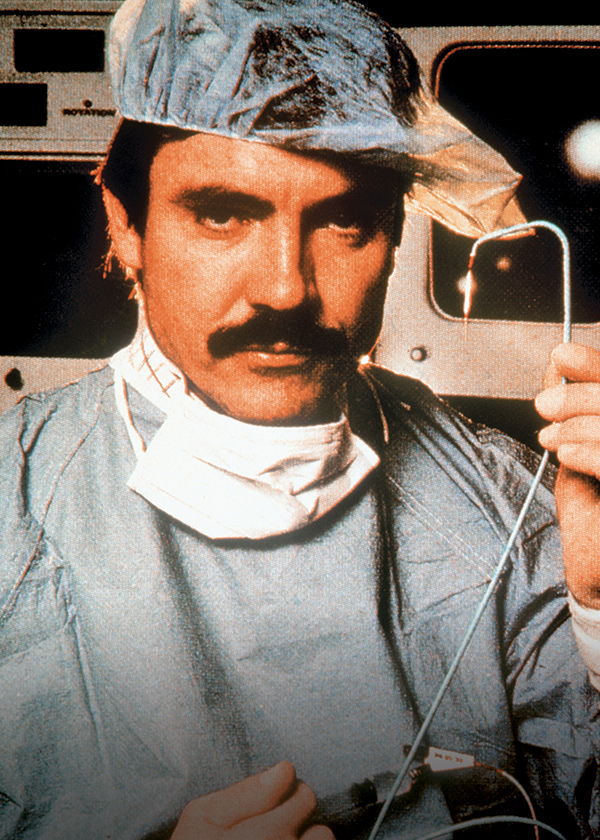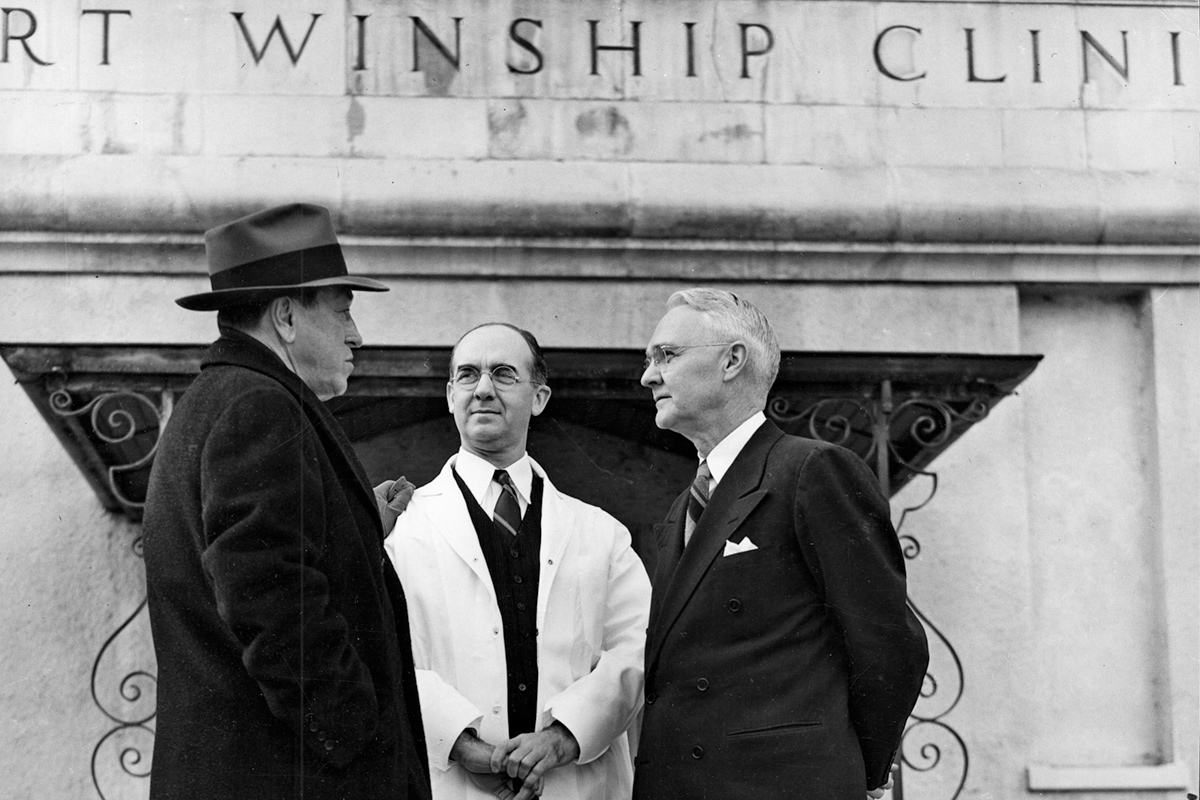Health Care History

62. That’ll Be $2, Please
Emory University Hospital Midtown began as the Davis-Fischer Sanatorium, before becoming a nonprofit hospital in 1931 and being renamed for Crawford Long, the Georgia physician who discovered that sulfuric ether could be used as an anesthetic. Long became the first surgeon to use the anesthesia during an 1842 operation when he removed a tumor from the neck of a patient he had “rendered insensible” with an ether-soaked towel (the bill: $2 for the operation and ether).

69. Supporting Our Boys at the Front
In 1917, organized by Lieutenant Colonel Edward C. Davis, Emory Unit Base No. 43 shipped out for France to aid the allies in World War I. The unit served for six months in the American Expeditionary Force and, during and after the war, its doctors were an especially valuable asset to soldiers wounded by gas. The Emory No. 43 Unit, including new and former members, served in a similar capacity in World War II.
70. A Lot of Heart
Emory’s heart transplant program celebrated its 500th transplant in June 2008.

Andreas Gruentzig
71. Magic Balloon
In Zurich, Switzerland, in 1977, Andreas Gruentzig developed and performed the first human balloon angioplasty to treat coronary artery blockages and became a medical superstar after news of his procedure spread. Emory’s School of Medicine recruited Gruentzig against heavy competition. After his death in a plane crash in 1985, Emory created the Andreas Gruentzig Cardiovascular Center, and the university remains a premier training center for angioplasty.

First Winship director Elliott Scarborough with Robert W. Woodruff and leader Hugh Wood.
85. First in State
In 1937, with a $50,000 donation from Coca-Cola giant Robert Woodruff, who had lost his grandfather to cancer, Emory established the Winship Center for Neoplastic Diseases, which later became the Winship Cancer Institute, Georgia’s first and only cancer center designated by the National Cancer Institute.
86. Elder Care
Emory and the United Methodist Church founded Wesley Woods Geriatric Hospital, the first freestanding geriatric hospital in the US, in 1987. The hospital treats more than 30,000 elderly and chronically ill patients a year and is nationally recognized for its programs and research in depression, sleep disorders, rehabilitation, Alzheimer’s, Parkinson’s, and Huntington’s disease, among others.
89–100. Health Care Firsts
- 1939: The nation’s first living triplets born by Caesarean section are delivered at Crawford Long Hospital.
- 1940s: With other Emory colleagues, Eugene Stead 32M helps develop the first cardiac catheterization lab in Georgia, and third in the world, at Grady Hospital.
- 1947: Georgia’s first corneal transplant is performed by Phinizy Calhoun Sr. at Emory University Hospital.
- 1962: Georgia’s first successful “blue baby” open-heart surgery is performed by Emory cardiac surgeon Charles Hatcher.
- 1966: Georgia’s first kidney transplant is performed by vascular surgeon Garland Perdue 52M.
- 1970: Georgia’s first coronary bypass is performed at Emory.
- 1979: Georgia’s first bone marrow transplant is performed at Emory.
- 1987: Georgia’s first liver transplant is performed at Emory.
- 1987: Implantation is performed by Emory’s John Douglas and colleagues of the first human coronary stent in the US.
- 1988: The world’s first non-related umbilical cord cell transplant for sickle cell anemia is performed, on a 12-year-old boy at Emory University Hospital.
- 1997: Emory doctors implant Georgia’s first biventricular pacemaker, which syncs the beats of the left and right ventricles of a damaged heart by sending out corrective electrical impulses.
- 2011: Emory surgeon Linda Cendales performs the Southeast’s first total hand transplant, for a college student who had lost her left hand as a child.
Click here to continue reading.
Our next category of note: Homegrown Discovery.






